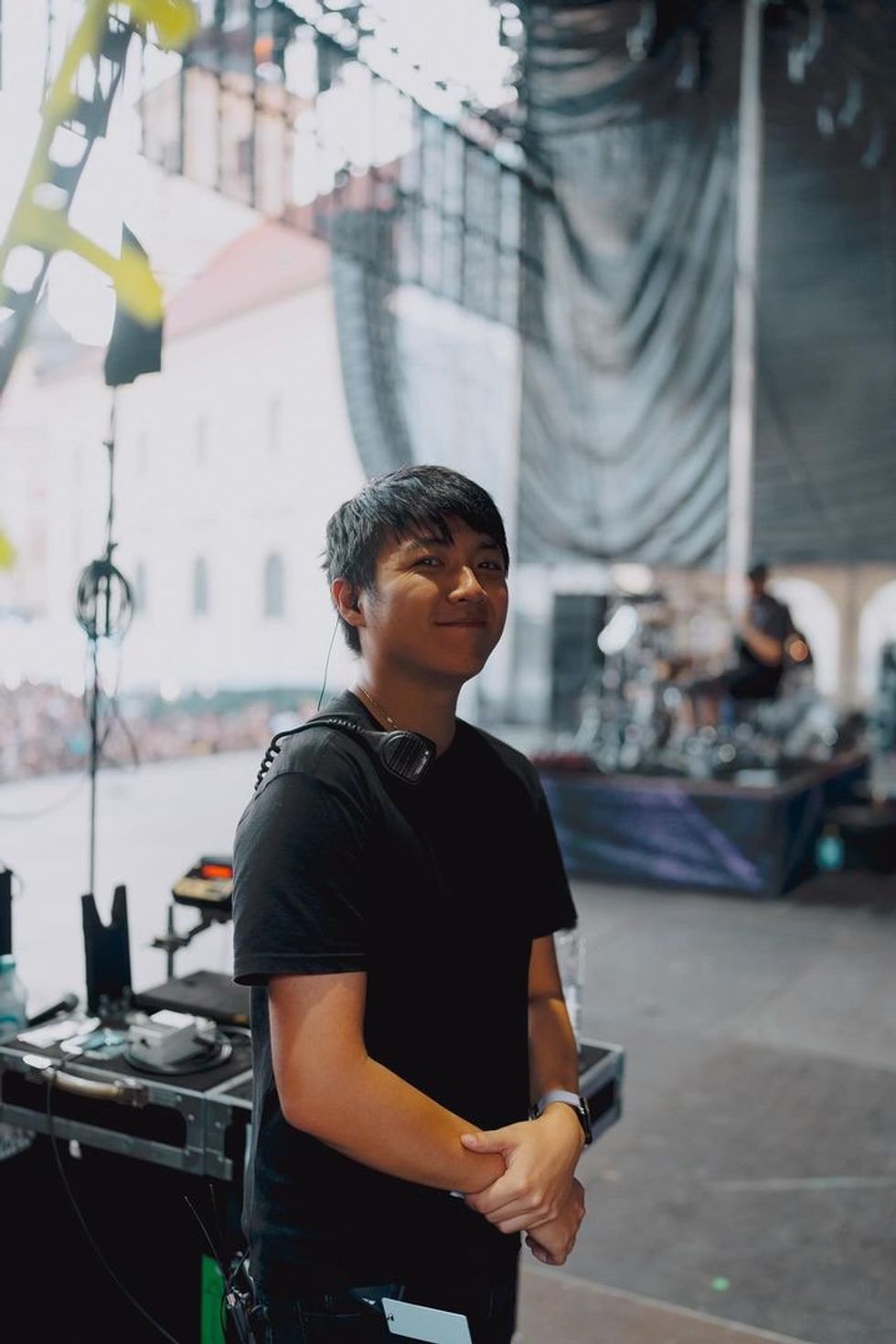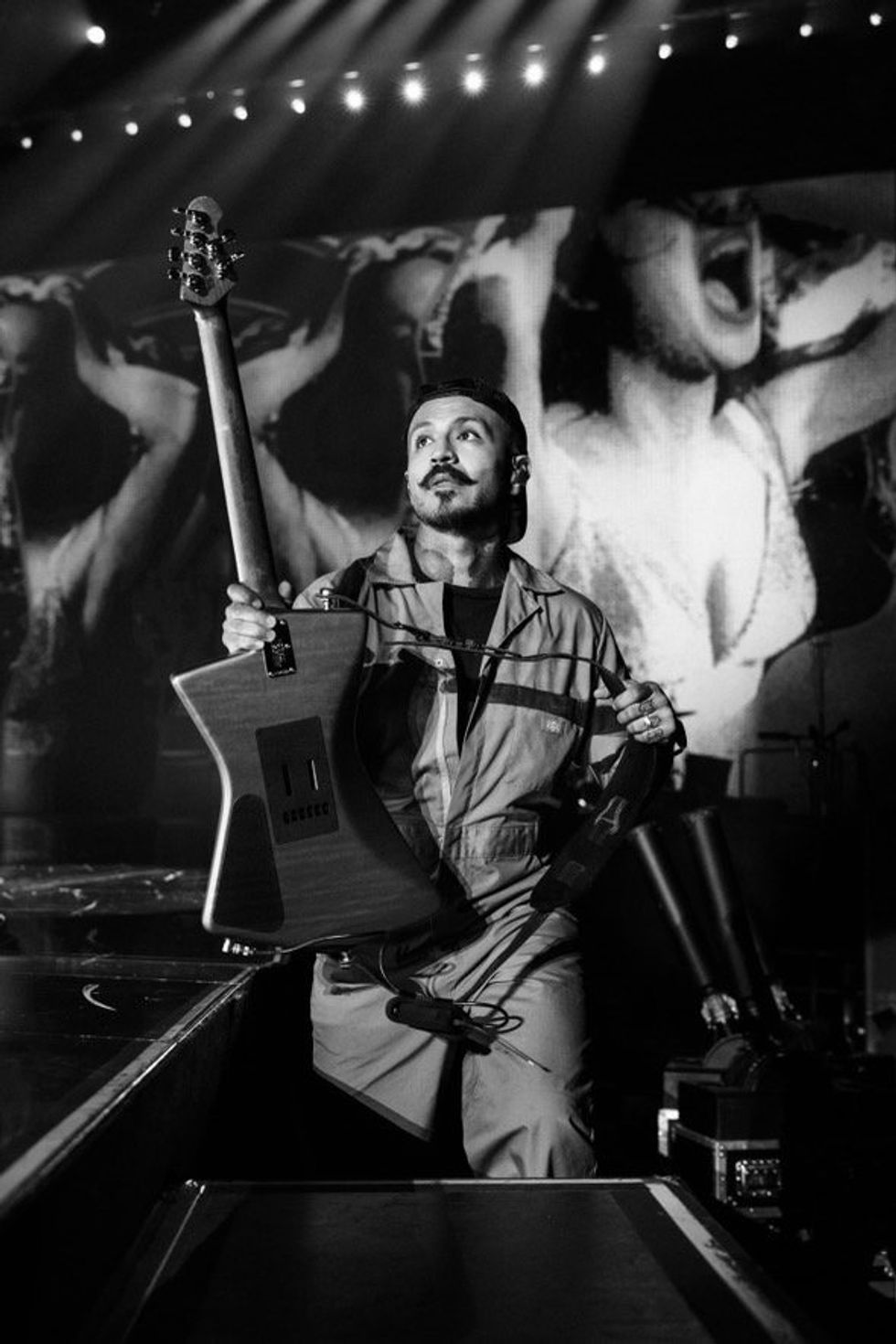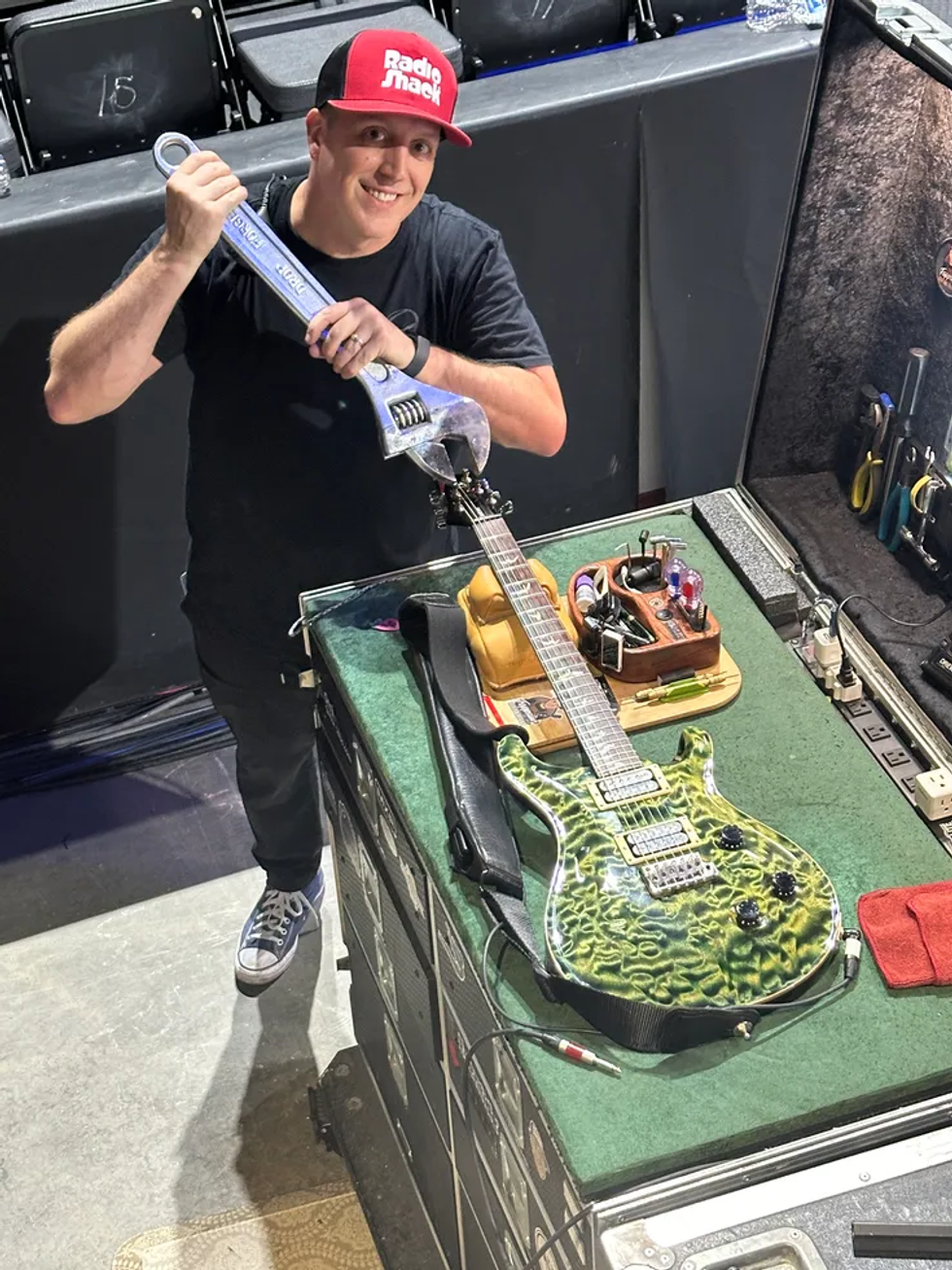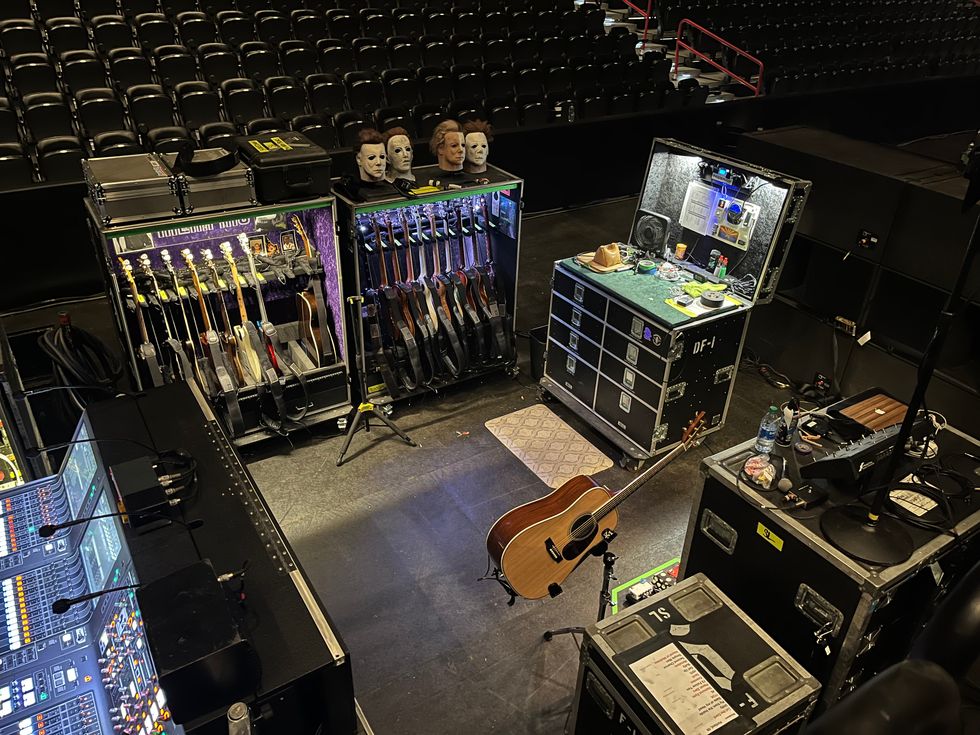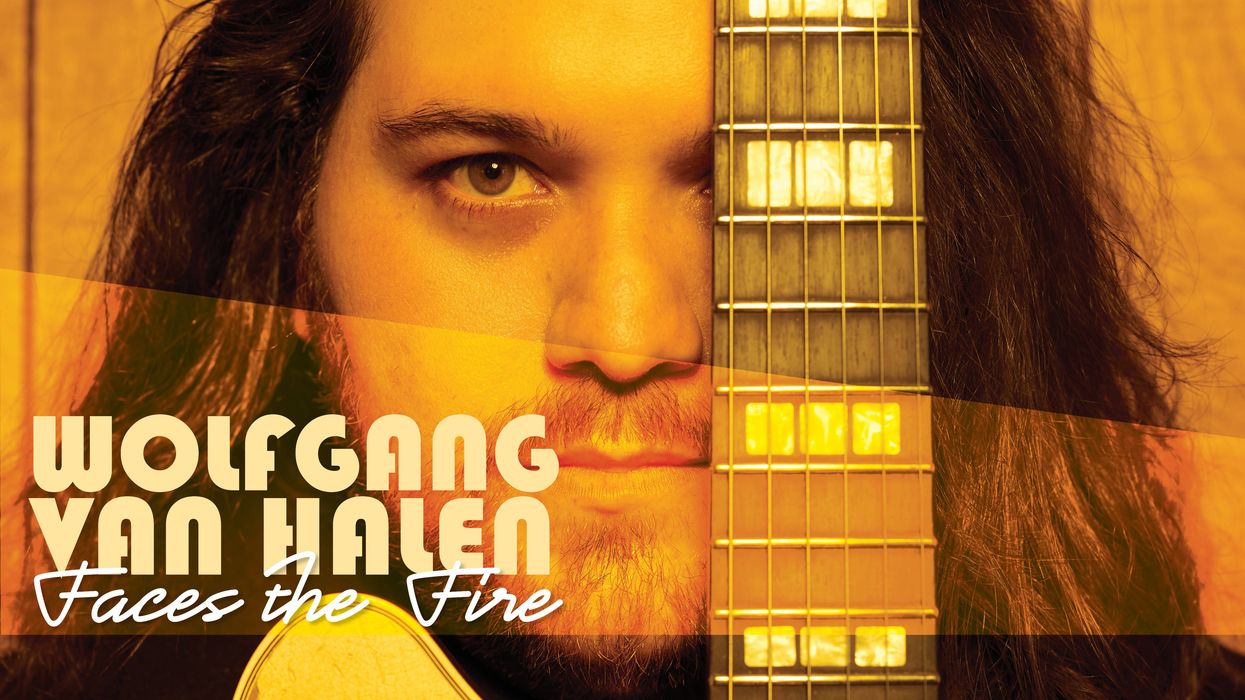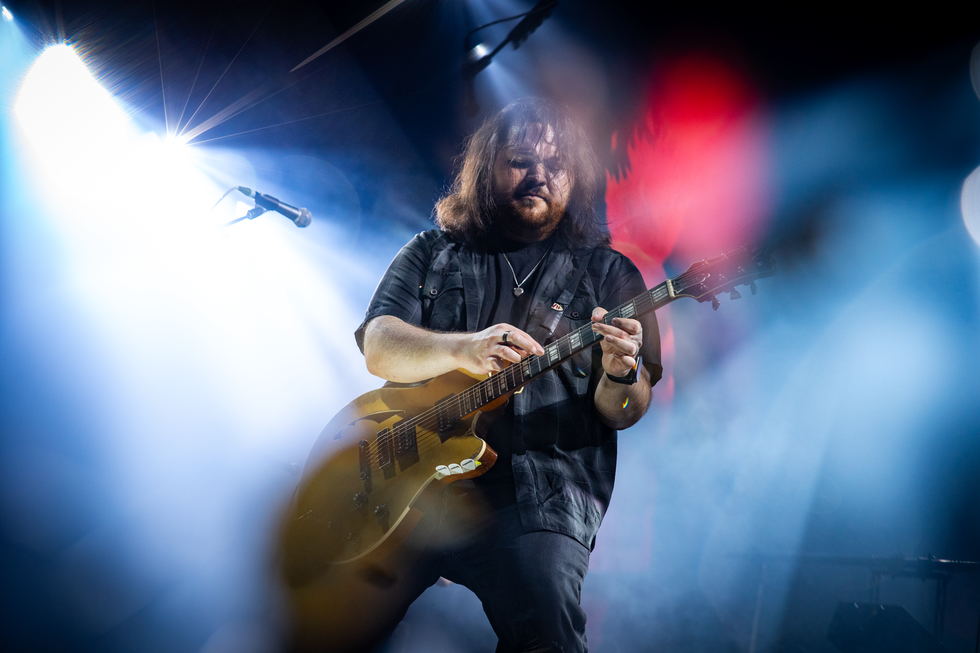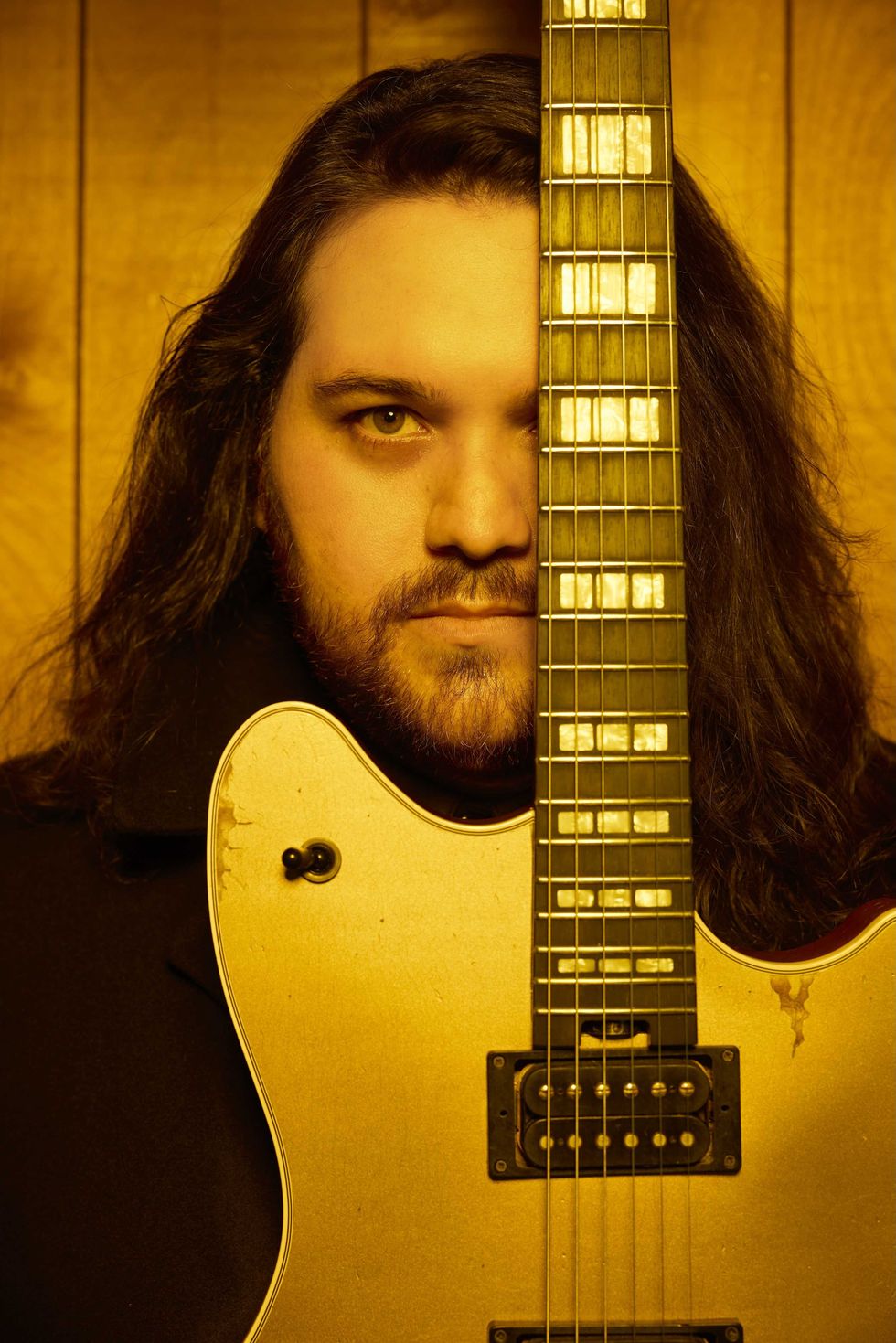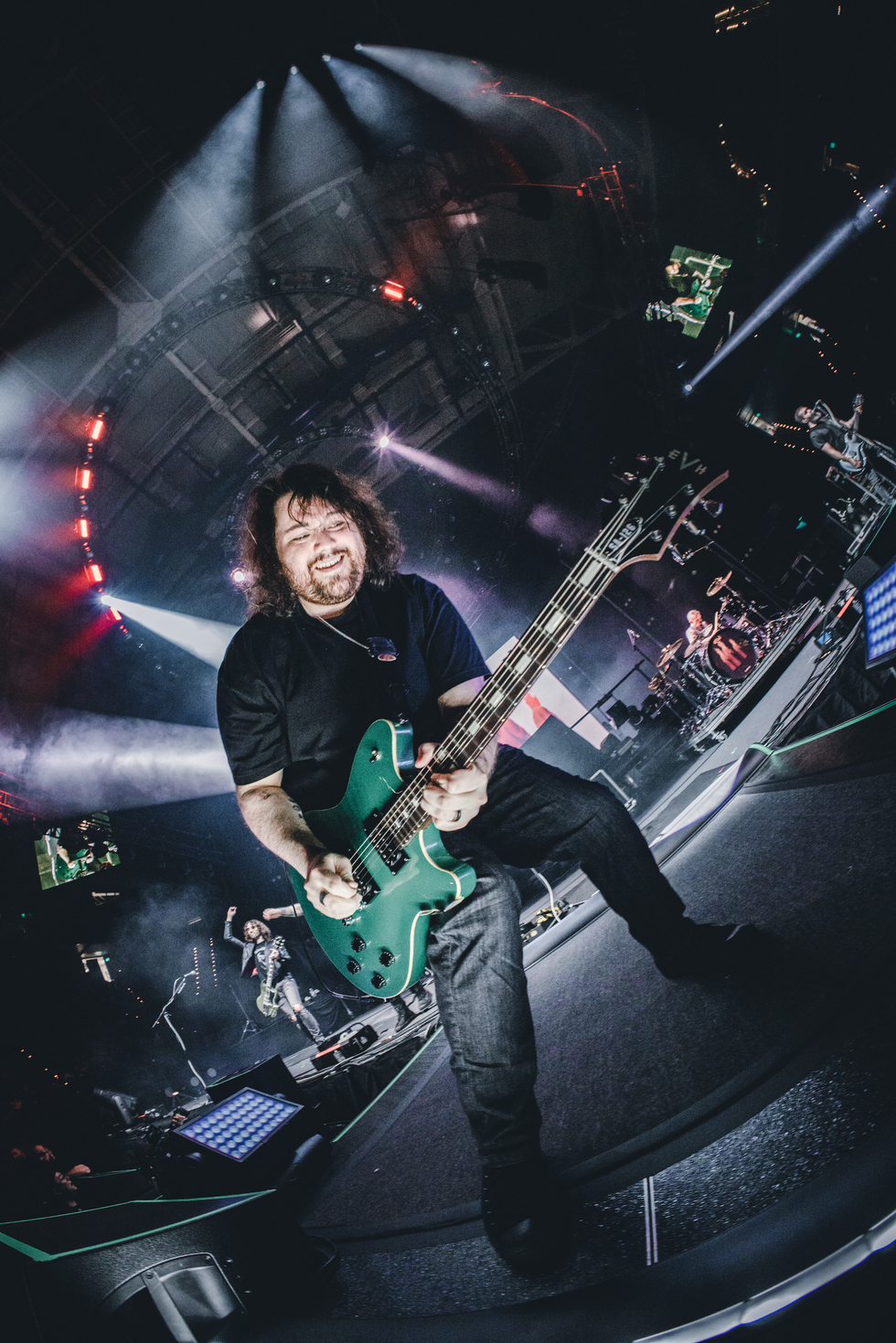Amos Heller’s talent and persistence carried him from modest cover-band tours to backing Taylor Swift. Photo courtesy Jon Moody | seymourduncan.com
The stadium goes dark. The screams of 70,000+ fans deafen mere mortals, but the band is wearing in-ear monitors, anxiously awaiting the cue to kick off the show. They are dialed in and ready. At such moments, a player must occasionally wonder, “How did I get here?”
For Amos Heller, keeper of the low end for megastar Taylor Swift since 2007, that question comes up a lot, and I was able to ask him myself. The answer—and his approach to bass and penchant for thrash metal—may surprise you.
Amos is a native of Charlottesville, Virginia, and a proud product of the public school system. “Music programs in Charlottesville are well funded and passionately led, and I credit my teachers for the push in the right direction,” says Amos. “My middle-school orchestra teacher, Mr. Lind, would give me private lessons on upright bass to help me keep up, and in high school, Mrs. Thomas would challenge us with difficult pieces, pushing us to our fullest potential.”
Learn ’em all. In the midst of this formal training—at age 13, to be exact—Amos purchased his first electric bass and immediately learned the entire Kill ’Em All record by Metallica. “I still play ‘Anesthesia’ when auditioning pedals,” he says.
Amos’ path from “Hit the Lights” to “Fearless” was far from direct, but like every great success story, the protagonist connected the dots to keep moving forward. Amos played in cover bands in high school and college because, he says, “I realized cover shows were more fun because people would actually attend.” Amos settled into the Cincinnati music scene. His degree in sociology merely hung on the wall as he went “all in” with a band—one that, like most bands, didn’t make it.
Another opportunity arose when Amos connected with local producer Ric Hordinski (Over the Rhine, David Wilcox), who began offering him a decent amount of studio work. All the while, Amos knew the opportunities were limited. “I’d see a tour bus roll through town, and I would want to be on it,” he remembers. “The problem was that they were always just passing through town and never leaving from there.”
Figuring that “one must be present to win,” Amos packed the car and moved to Nashville. His goal was to learn as much as he could about playing live and in the studio. As fate would have it, two other friends from Virginia moved to town at the same time, and all three began the “hustle”—that constant search for gigs and cracks in the music industry’s armor.
New kid in Nashville. Amos found Nashville extremely helpful and generous to the “new kid.” Other players let him sit in on storied Lower Broadway and suggested songs to learn to expand his tool set. It was important for Amos to make a connection and put everything he had into each show, be it a three-song showcase or a four-hour cover set. His dedication paid off, and before long he quit his coffee shop gig to go on the road with a cover band.
Amos was a fast-climber in the scene, each move a couple of steps forward. “I’ve been fortunate that progress has been continual,” he notes. He graduated from van-and-trailer tours to the coveted tour bus, joining Rhett Akins, then Josh Gracin. Then Amos received a call from Al Wilson, who was the drummer on the first gig Amos ever played in town, and who happened to be the bandleader for a very young new artist named Taylor Swift. She was getting more popular, but few could have predicted that she would become the most successful artist of the digital age. (Her last record, Red, sold 1.2 million copies in seven days.) And she has a great band behind her night after night, playing for millions of people per year.
Amos remains a bass gear junkie, constantly searching for new tones and sonic toys. He takes a straight-ahead approach to his tone, relying on great basses as opposed to lots of outboard gear. A proud Fender endorsee, Amos used his ’62 RI Precision (loaded with Seymour Duncan Quarter Pounders) on almost everything during the last U.S. tour, though he also carried a Cabronita P-bass and a Dimension 5 for extended range. His one “quirky” bass, a ’71 Orlando, also sees some use. His pedalboard is modest: an Xotic Bass RC Booster, a Radial Classic Tube Distortion, and an ancient Ibanez chorus, all controlled by tech Steve Uncapher. With no amps on stage, Amos runs it all through an Avalon U5 preamp.
Staying sharp. Even with all the exposure and attention, Amos focuses on remaining musically sharp. He does sessions in Nashville, and a recent touring hiatus found him back on Lower Broadway, playing four-set nights. He recently took a lesson from bass legend Michael Manring, and is diving deeper into chordal theory. The music on his iPod is radically diverse: Meshuggah, Skrillex, Tedeschi Trucks Band, D’Angelo, King’s X. He takes in local live music when he can, while a new son occupies his downtime.
So there’s some insight into how to land a gig with one of the biggest artists on the planet. Amos is a well-respected player in the Nashville bass community, and anyone hoping to move forward in their career or playing ability should emulate his drive and persistence. Your gig may not be as big as Amos’, but if you treat it as such, it may take you places you have only dreamed.



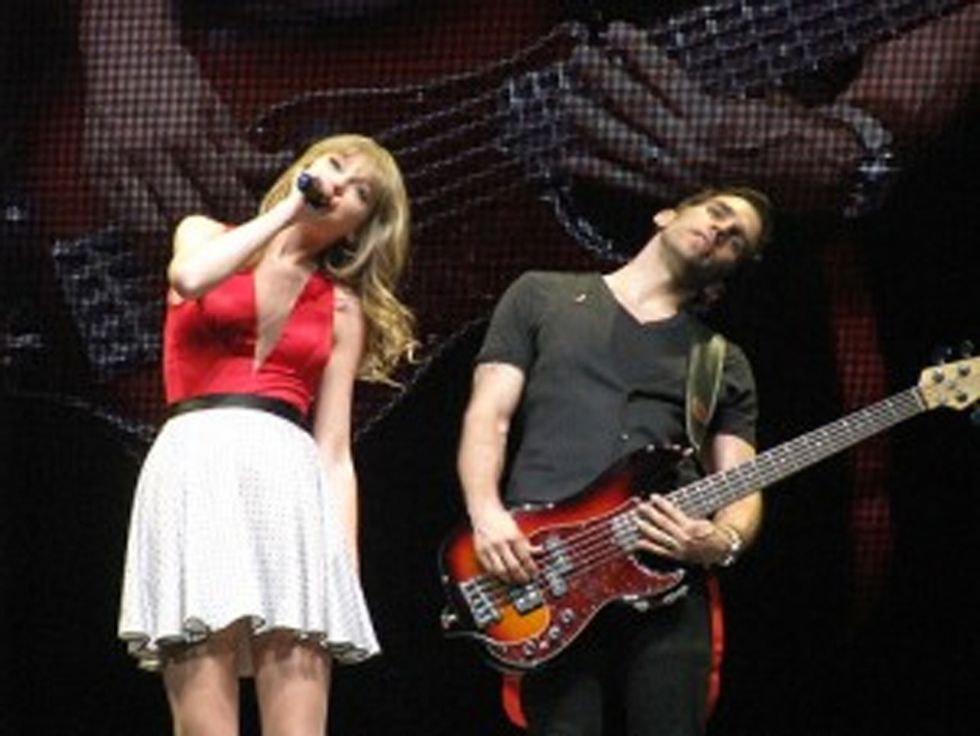




![Rig Rundown: AFI [2025]](https://www.premierguitar.com/media-library/youtube.jpg?id=62064741&width=1245&height=700&quality=70&coordinates=0%2C0%2C0%2C0)












 Shop Scott's Rig
Shop Scott's Rig![Rig Rundown: Russian Circles’ Mike Sullivan [2025]](https://www.premierguitar.com/media-library/youtube.jpg?id=62303631&width=1245&height=700&quality=70&coordinates=0%2C0%2C0%2C0)













 Zach loves his Sovtek Mig 60 head, which he plays through a cab he built himself at a pipe-organ shop in Denver. Every glue joint is lined with thin leather for maximum air tightness, and it’s stocked with Celestion G12M Greenback speakers.
Zach loves his Sovtek Mig 60 head, which he plays through a cab he built himself at a pipe-organ shop in Denver. Every glue joint is lined with thin leather for maximum air tightness, and it’s stocked with Celestion G12M Greenback speakers.







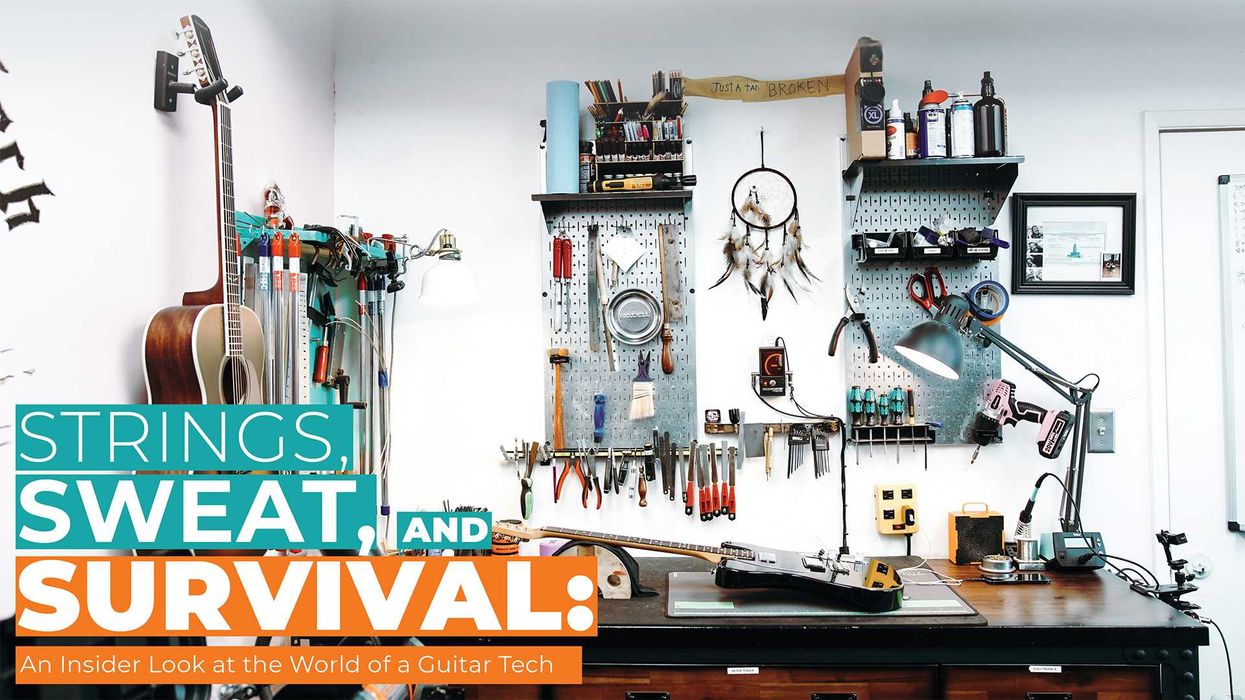
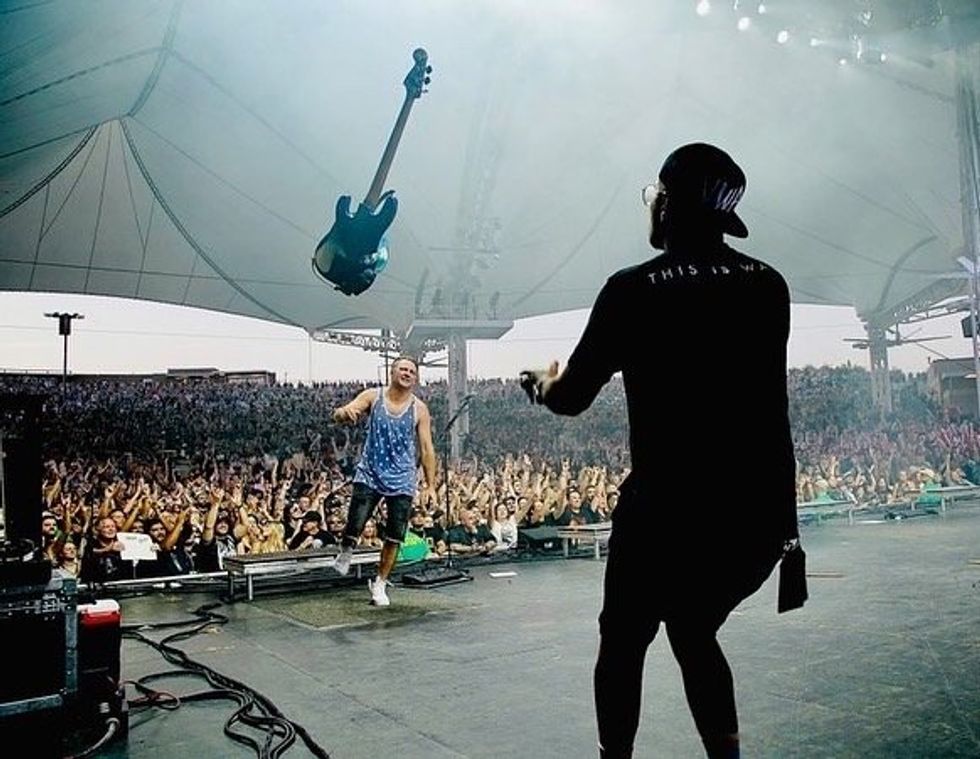 Luis Munoz makes the catch.
Luis Munoz makes the catch.